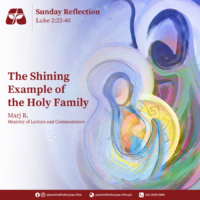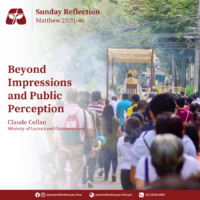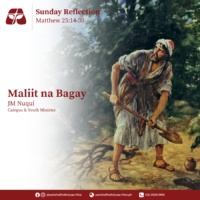Feast of the Sto. Niño
Third Sunday of January
Viva Pit Señor! Viva Señor Santo Niño!
The Feast of the Sto. Niño is a religious celebration unique to the Philippines. The Spanish title “Sto. Niño” means “Holy Child”. Filipinos have a strong devotion to the Holy Child as can be seen through the presence of the Sto. Niño’s image everywhere—from houses to offices and from shops to jeepneys. This devotion is as old as Christianity itself in the Philippines. Colorful festivals such as the Sinulog in Cebu tell the story of the arrival of Christianity in the Philippines and the acceptance of the faith by the locals.
Hara Amihan of Cebu (later named Queen Juana) and her husband, Rajah Humabon of Cebu, were some of the first natives to accept the Christian faith and were baptized with 800 of their people in 1521. An image of the Child Jesus was given by Portuguese explorer for Spain, Ferdinand Magellan, to Hara Amihan as a baptismal gift. This image is now known as the Sto. Niño de Cebu and is the oldest Christian relic, alongside Magellan’s Cross, in the country.
Upon Magellan’s death at the Battle of Mactan, the image disappeared and was only rediscovered in 1565 by men of Miguel Lopez de Legazpi. However, historians believe that between Magellan’s death and Legazpi’s arrival, the natives continued to honor the Child Jesus through a previously pagan dance ritual called the “Sinulog”. The image now resides in the Basilica Minore del Santo Niño de Cebu—the oldest Church in the Philippines—which is said to have been built on the site where the image was found. A feast dedicated to the finding of the Child Jesus was then established on April 28, 1565.
Through the centuries, the Basilica Minore del Santo Niño de Cebu has been totally destroyed by fire twice and was bombed during World War II. Yet, in all those occasions, the image of the Sto. Niño was miraculously never damaged.
Today, the feast day is celebrated every third Sunday of January (or the second Sunday after the Solemnity of the Epiphany). Cries of “Viva Señor Santo Niño” and “Viva Pit Señor” ring across the country as towns and cities celebrate the feast day.
“Viva” is a similar expression to “hail” and literally means “to live”. It is used as a cheer and a way to honor the Lord Jesus. “Señor” is the Spanish word for “Lord”. The title is given in honor to the Child Jesus as an acknowledgment of his Godhood and authority over all. The word “Pit” is a contraction of the Cebuano word “sangpit” which does not have an exact translation in Filipino or English. The word is usually used when a person visits another home with the intention of borrowing something but the owner isn’t around. It is an appeal from a distance. And so, when we cry out “Viva Pit Señor”, we lift up our appeals to God while acknowledging our unworthiness in making these requests to God.
May the Feast of the Child Jesus draw us ever closer to the Lord. Viva Señor Santo Niño!
————————-
Sources:
1. History of Sinulog
2. How Filipinos celebrate their faith during Santo Nino festival season | America, A Jesuit Review
3. Celebrating the Feast of the Sto. Niño | Manila Bulletin
(https://news.mb.com.ph/2018/01/20/celebrating-the-feast-of-the-sto-nino/)
4. History of Sto. Niño Festivals | SunStar
(https://www.sunstar.com.ph/article/55070)
5. What does “VIVA PIT SEÑOR!” and “VIVA SEÑOR SANTO NIÑO!” mean? | Basilica Minore del Sto. Niño de Cebu Official Page(https://santoninodecebubasilica.org/chronicles/viva-pit-senor-viva-senor-santo-nino/)


